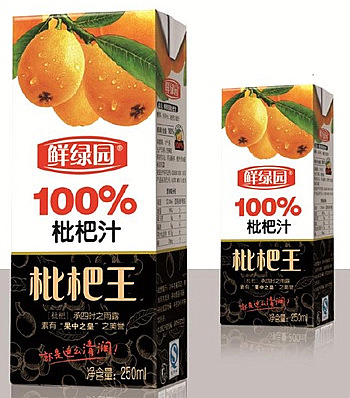'Loquat Fan' contributed this article to NextInsight
SINO GRANDNESS is holding an EGM on 23 Feb to secure shareholders' approval for the spin-off and primary listing of its wholly-owned beverage subsidiary, called Garden Fresh, on the Hong Kong Stock Exchange.
I have encountered some confusion among investors with regard to the 'correct' profit figure of Garden Fresh to use in the IPO valuation.
|
Background |
5 Feb circular
For the EGM, Sino Grandness has issued a circular dated 5 Feb, which discloses, among other things, the following financial data (in RMB m) for 2012, 2103 and 2014:
| RMB m | 2012 | 2013 | 2014 |
| Revenue | 865.3 | 1,382.3 | 1876.7 |
| Gross profit | 366.1 | 578.8 | 800.3 |
| Profit before tax | 203.2 | 299.1 | 391.8 |
| Profit | 103.4 | 153.5 | 117.3 |
The low profit of RMB 117.3m for 2014 has caused some anxiety among investors, as it will translate into a valuation of RMB 1,760m only, on 15 times earnings for the IPO. This is way below Garden Fresh's brand value of RMB 3,500m as assessed by the Asia Brand Association Experts Committee and Asia Brand Research Centre in 2013.
From Table A, we see that the 2012 profit was RMB103.4 million. If this figure were taken at face value by the bondholders, they would have considered Garden Fresh a poor performer (as it is below the target of RMB 140m mentioned in the 'Background' section) and opted to redeem the bonds.
The IPO journey would have ended in 2013 when 2012 audited results became available.
Was RMB 153.5m the profit for 2013? Obviously not again, as bondholders would end up entitled to own 46% of Garden Fresh as explained in the 'Background' section above. If they were entitled to own 46% of Garden Fresh, would they have allowed Sino Grandness to make the following statement in the 5 Feb circular:
"Assuming full conversion prior to the Proposed Listing and on the basis of an agreed valuation of RMB1,500,000,000, the Company will hold 76.6% in the Listco and CB1 Holders and CB2 Holders will collectively hold approximately 23.4% in the Listco."
On page 6 of its 2014 annual report, Sino Grandness provided the following 'adjusted earnings' for the group:
| 2013 | 2014 | |
| Adjusted earnings | 418.2 | 467.1 |
| Profit in P&L statement | 287.8 | 249.5 |
| Difference | 130.4 | 217.6 |
A note on that page explains that the profit in the P&L statement was lowered by two items:
(1) 'non-cash interest expenses of CBs', and
(2) 'changes in fair value of the option derivatives in relation to CBs'.
Adding the 'difference' (as it is due entirely to Garden Fresh which issued the convertible bonds) in Table B to the profit in Table A gives rise to the following adjusted profits of Garden Fresh:
| RMB m | 2013 | 2014 |
| Profit as shown in 5 Feb circular | 153.5 | 117.3 |
| Difference due to CBs | 130.4 | 217.6 |
| Adjusted profit | 283.9 | 334.9 |
In an IPO, investors ignore one-off items and focus on core earnings. As Garden Fresh's IPO will be preceded by bondholders extinguishing the debts, the two items related to CBs will disappear from the scene, and it stands to reason that adjusted profit is the profitability measure.
| IPO valuation: Two factors | |
|
Top on investors' mind now is the valuation that Garden Fresh can fetch for its IPO. Two factors matter (market volatility notwithstanding):
That China Minzhong has not been faring well in its loquat drink sales (and is reviewing its presence in the sector) may indicate the rising dominance of Garden Fresh. |









Adjusting for these extraordinary items, Net Profit used for valuation should be close to RMB 334.9m as pointed out by Loquat Fan